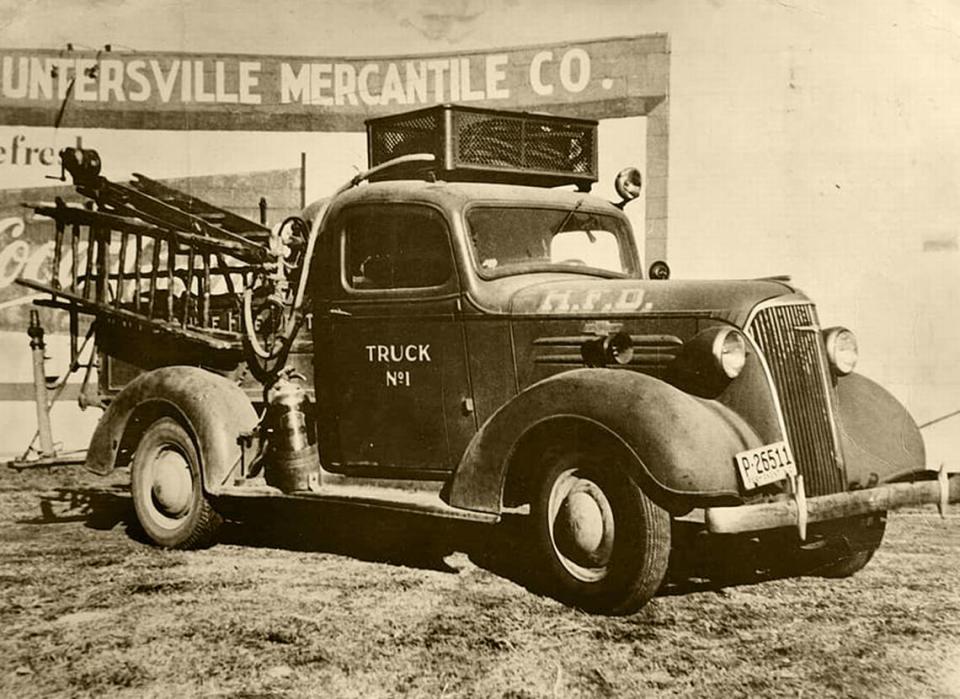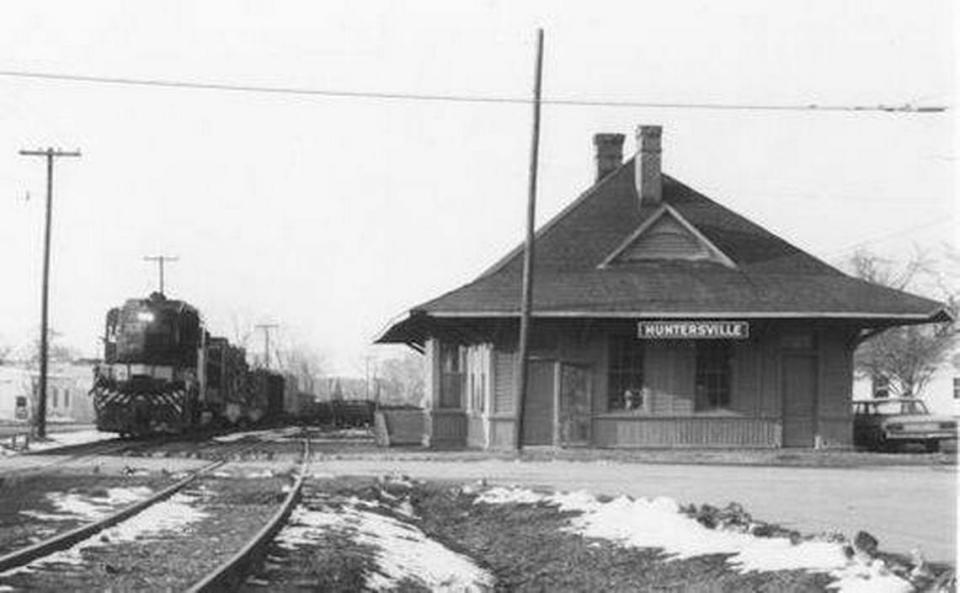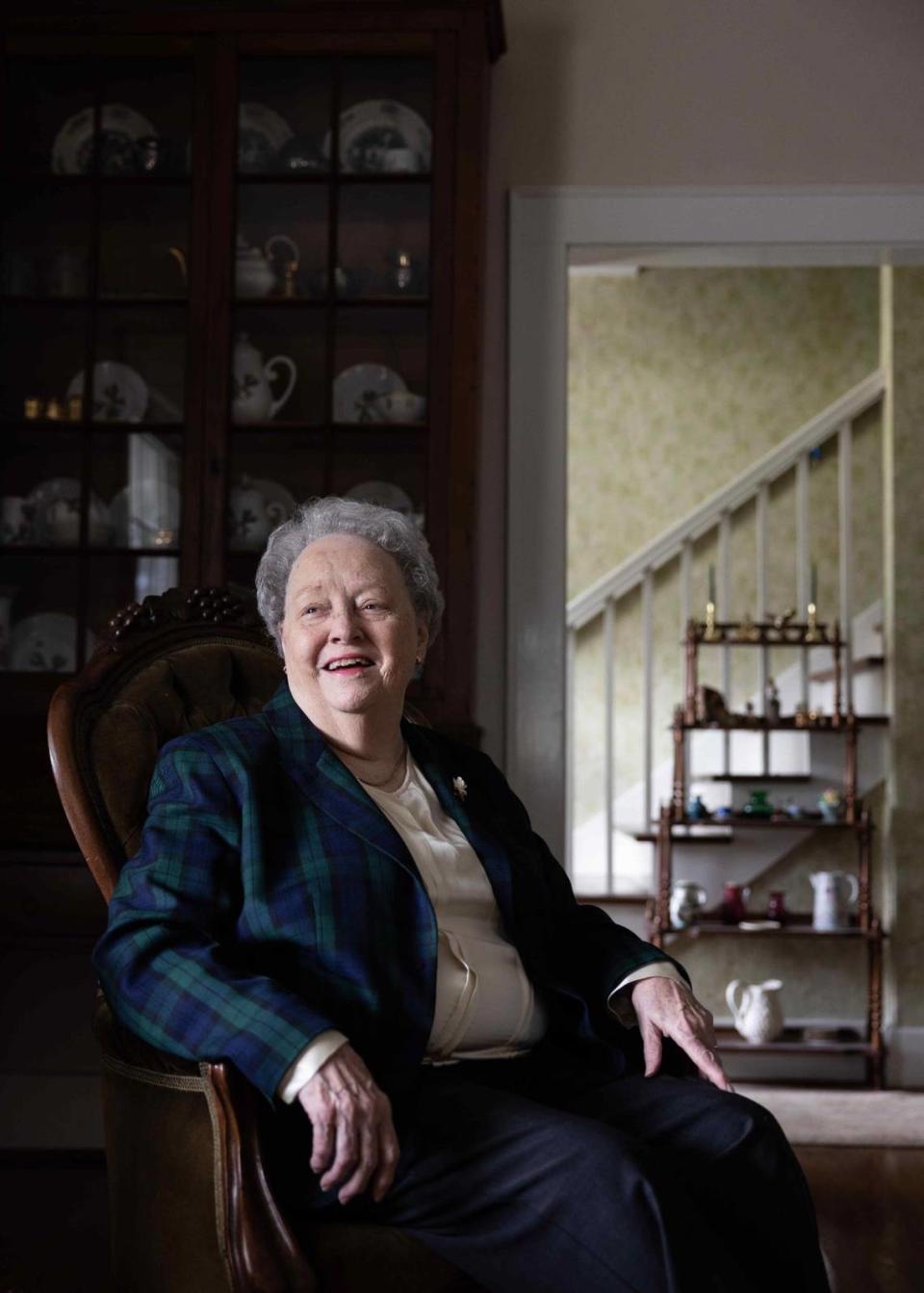As Huntersville turns 150, former mayor reflects on past triumphs, advocates for future growth
The Town of Huntersville is celebrating its 150th anniversary this year, with a full slate of events planned to commemorate the thriving community.
Though many think of Huntersville as a suburb of Charlotte, a former mayor believes the town has a distinct identity separate from the city.
Sarah McAulay, a Huntersville resident born in 1939 who has lived on Gilead Road for most of her life, recalled when the town was made up of 18 homes in 1 square mile of northern Mecklenburg County.
When McAulay was a kid, downtown Huntersville consisted of four grocery stores, a bank, and a laundromat, which meant trips to Main Street were rare, she said.
“You really had to create your own entertainment,” McAulay said, adding that baseball and softball were among the popular activities. “Sometimes you got into trouble, and sometimes you didn’t.”
Though most of the town’s population were farmers, carpenters and mill workers at the time, McAulay said many families wanted their children to have “sit-down jobs,” where they could work in an office.
“They had aspirations for their children to have more advantages in life than they had,” she said.
After graduating from North Mecklenburg High School in 1957, McAulay attended the Woman’s College of the University of North Carolina, now known as the University of North Carolina at Greensboro, to study economics. She returned to Huntersville in 1966 after a five-year stint at the Federal Reserve Bank in Richmond to work at North Carolina National Bank in Charlotte.
Three years later, McAulay ran for mayor. Despite the lack of women running for office during that time, mayors in the nearby towns of Davidson and Cornelius were women, she said.
“I made my own signs, and I went door to door and just introduced myself and asked them to vote for me,” McAualay said. “I was still working at the bank in Charlotte, so I had to get permission to run. They all told me I would lose.”
McAulay served as mayor for nearly a decade, then as a town commissioner for seven terms, beginning in 1991.

More than just a ‘bedroom community’
By 1980, Huntersville’s population ballooned to nearly 1,300, according to census data, but there were very few young families, and economic opportunities were scarce, McAulay said.
“I was interested in growth, and jobs for people here,” McAulay said.
McAulay says the biggest change for the community came when a change in water and sewer management allowed Huntersville to extend its town boundaries, growing it to the 63 square miles it is now.
“Our sphere of influence has been very important to us,” McAulay said. “It was probably one of the keys to being able to turn Huntersville into a more developed place.”
It wasn’t long before the number of subdivisions in the area tripled. As the town expanded and new residential developments were under construction, companies began eyeing Huntersville as a destination for new offices.
Huntersville Business Park, off Gilead Road adjacent to Novant Health Huntersville Medical Center, was established in the 1980s by North Carolina National Bank, which attracted many white-collar workers to the area, according to McAulay.
While the growth of the metropolitan has helped shape Huntersville, McAulay thinks of her hometown as more than just a suburb of Charlotte.
“It offended me when people talked about it being a bedroom community,” McAulay said. “We got into a lot of things here.”

A vision for the future
As of 2021, Huntersville’s population was 61,839, according to the latest census data — and it’s growing rapidly.
Nearly 20,000 people have moved to Huntersville every decade since 1990, said Kim Strickland, the public information officer for the town.
Strickland said the population spike is, in part, due to “generational growth,” where parents of residents from other areas of the country move to Huntersville to be closer to their children.
Sam James, the chair of the town’s 150th Annivesary Celebration Committee, said Huntersville has evolved into a self-sustaining suburb, where residents seldom have to drive to Charlotte for necessities.
“You did have to go to Charlotte a lot growing up, whereas now you have to go to Charlotte for nothing unless you’re going to the airport,” said James, who grew up in Huntersville. “People complain about the traffic in Huntersville, but we have everything now, so you’re only going a couple of miles, typically, to get what you need.”
Since it has expanded, current residents have shown up to numerous Huntersville Town Board meetings to speak out against residential developments. Recent cases include the planned expansion of Birkdale Village that would have added a 125-room hotel and 350 multifamily units to the mixed-use development, which planning board members voted against earlier this year.
As a champion of growth, McAulay had a name for citizens who oppose new developments.
“I call them ‘drawbridge citizens,’” McAulay said. “They come into town, and they want to draw the bridge up and not let anybody else in town.”
Huntersville is projected to surpass 100,000 residents by 2050 — a fact that many current residents shudder at. But McAulay welcomes the growth, and invited anyone interested in dropping by to experience all that the town has to offer.
“We want to keep improving, keep growing, and keep providing jobs, housing, education and activities for the citizens, and the people that want to visit,” McAulay said. “Come on, we’re good!”


